Concrete Pumping
- Sidewalks
- Curb and Gutter
- Patio Slabs
- House Slabs
- Pool Decks
- Concrete Pumping (3/8" to 1-1/2")
- Hard to reach locations
Grout Pumping
- Masonry Grouting
- Block Wall Grouting
- Form Grouting
- Multi-Story Grouting
- Pipeline Grouting
- Rip Rap Grouting
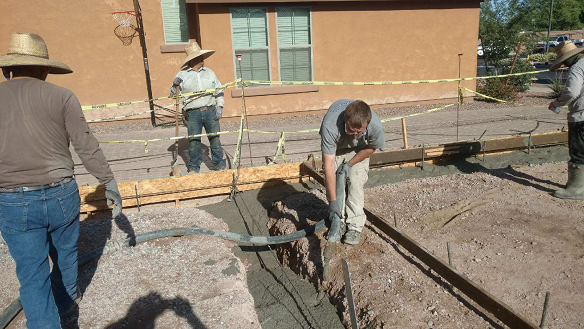
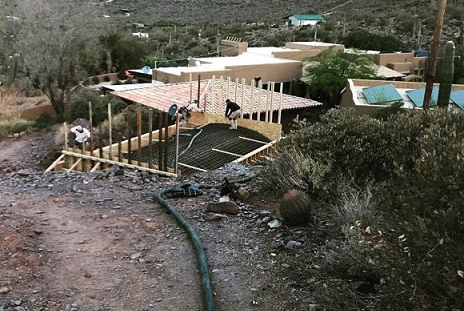
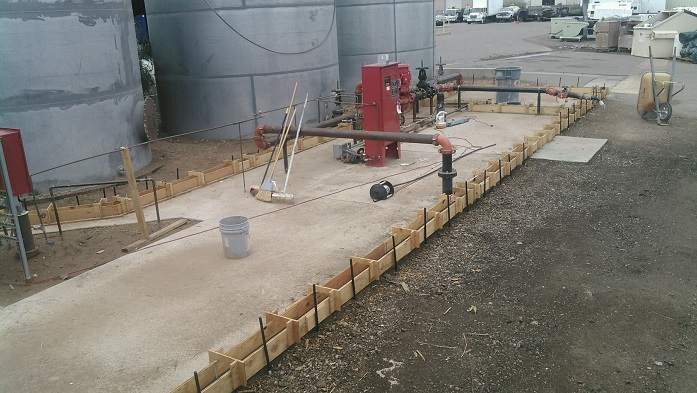
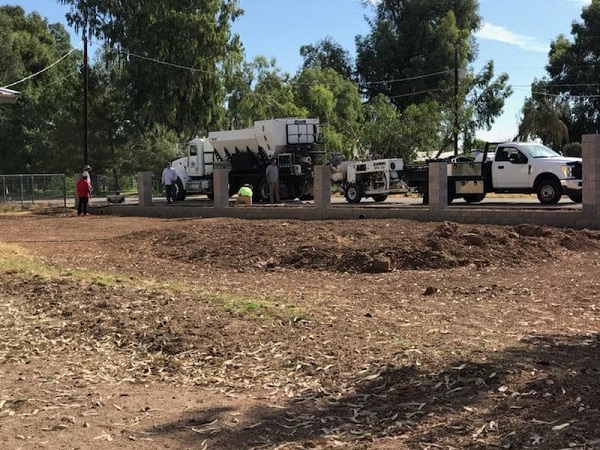
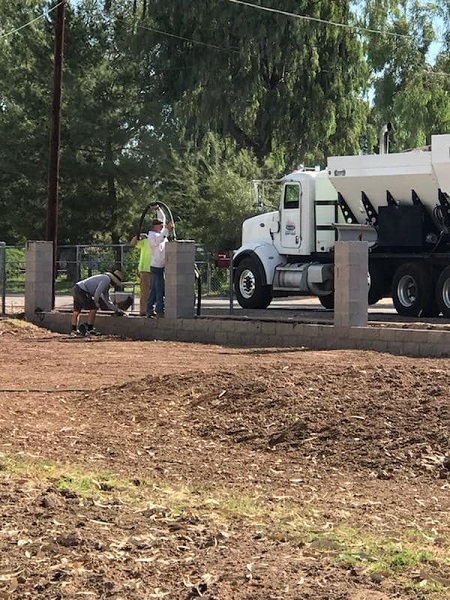
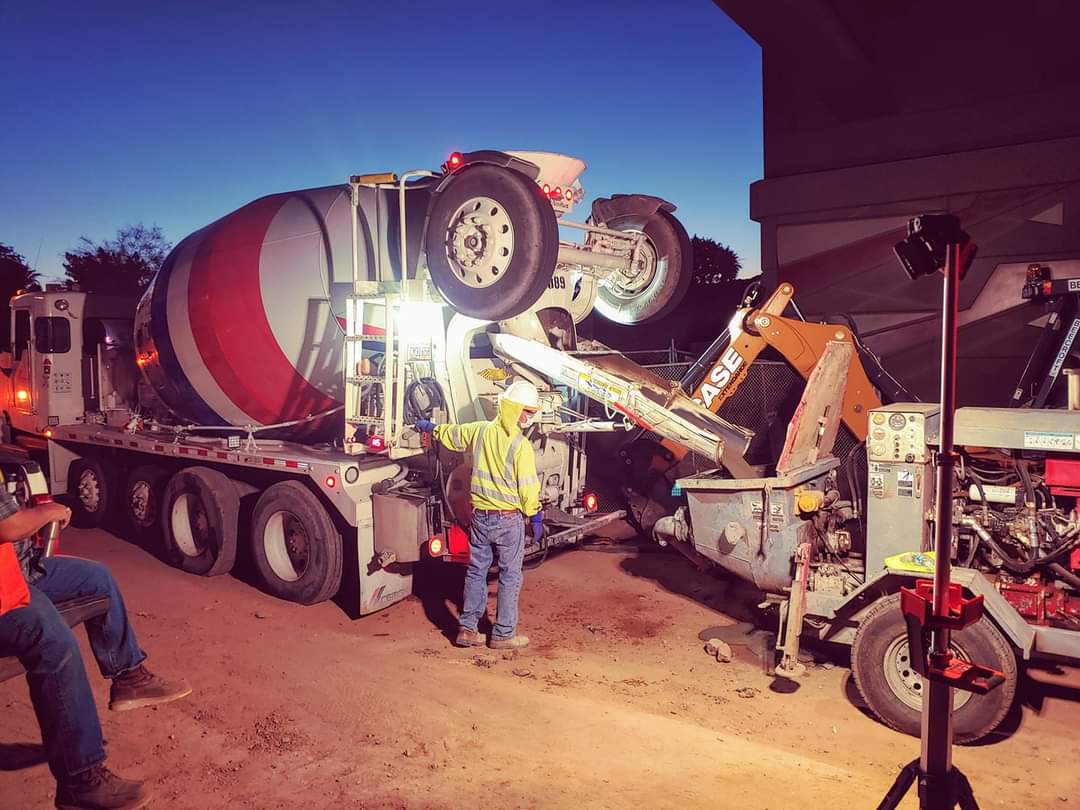
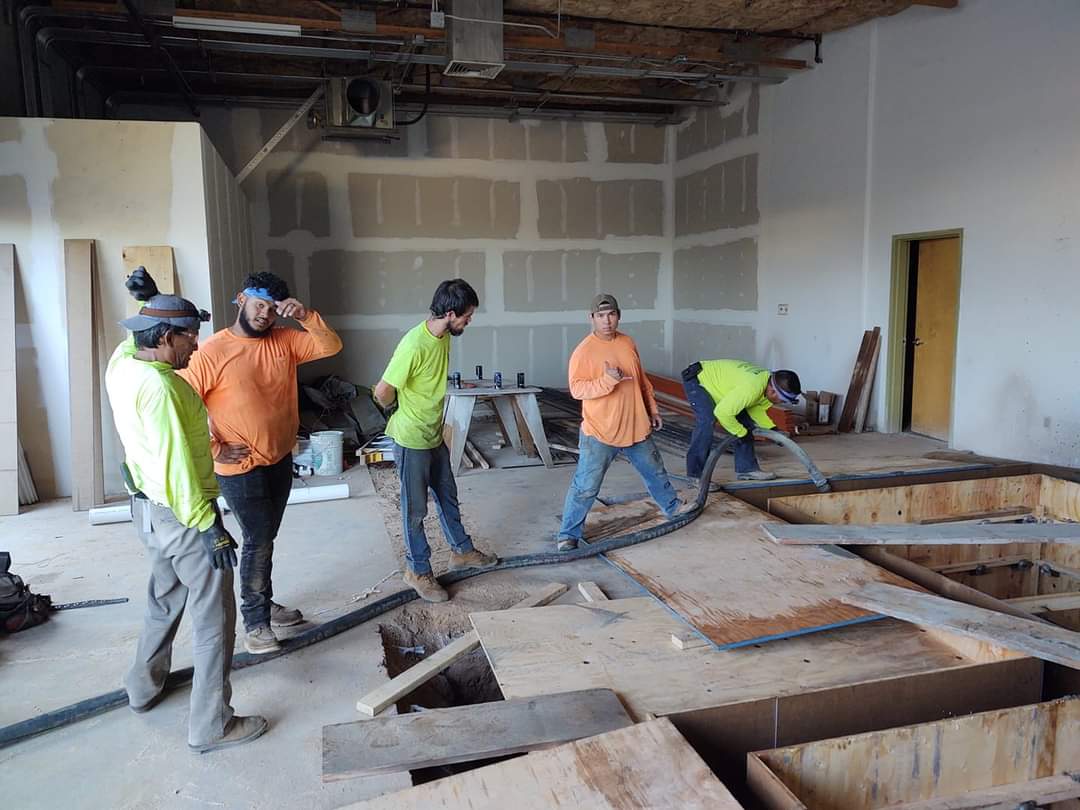
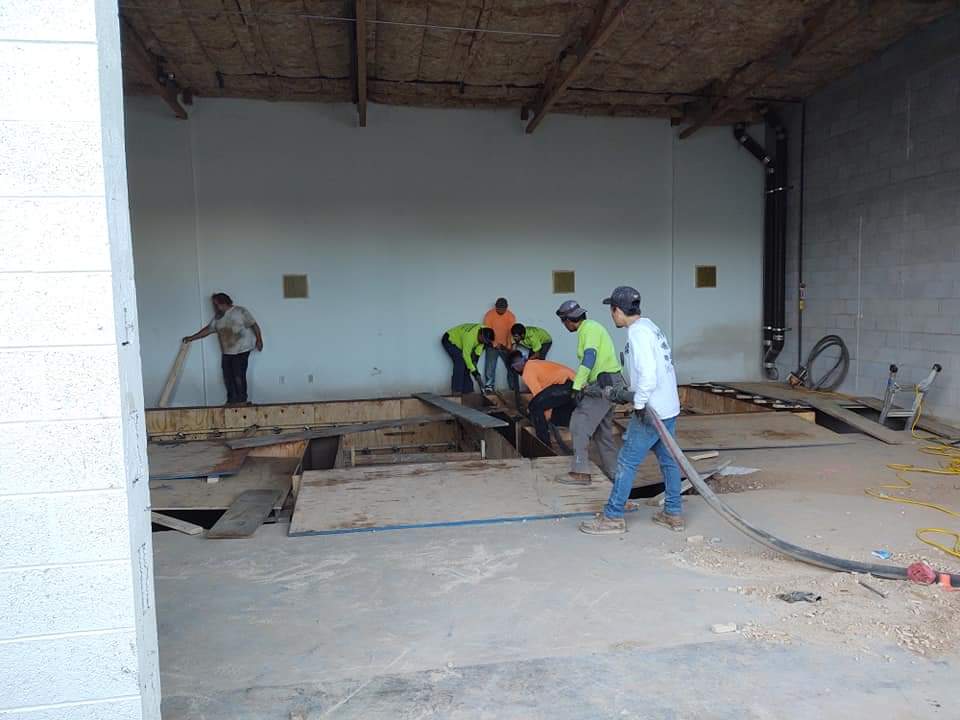
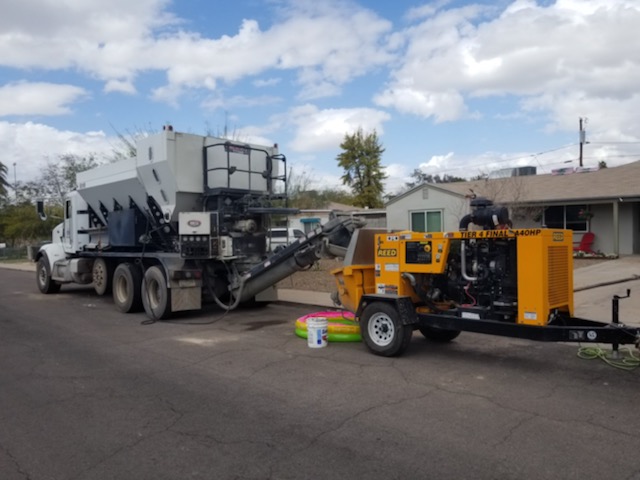
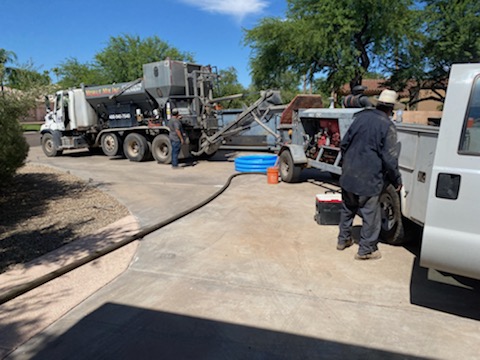
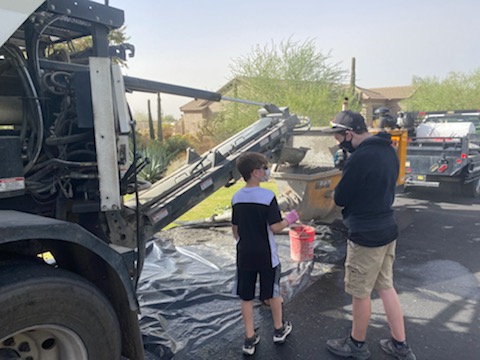
What exactly is Concrete Pumping?
Background to Concrete Pumps
Over a period of more than half a century, concrete pumps have slowly taken over from other methods of transferring liquid concrete. A number of different designs of concrete pump were developed in the first half of the 20th century but it was Friedrich Wilhelm Schwing's company Schwing GmbH which invented the twin cylinder hydraulic concrete pump in 1957. The principle of this design was adopted by almost all other manufacturers and is still the worldwide standard design.
The pump works by one piston drawing liquid concrete into a cylinder from a hopper while the other one simultaneously pushes its concrete out into the discharge pipes. A valve which determines which cylinder is open to the concrete hopper and which one is open to the discharge pipes switches over each time the pistons reach the end point and the process continues with the first cylinder now discharging and the second drawing fresh concrete from the hopper.
The Concrete Pump was particularly important in revolutionising the construction of large high rise buildings. Previously cranes had been employed to lift large buckets (or skips) full of concrete up to where it was needed. A crane could lift one bucket at a time, normally holding around 2 cubic yards of concrete.
There are many advantages in pumping concrete over this bucket and crane system. As well as being able to pump concrete much faster than buckets could lift it, it also means a constant supply of concrete to the top and the placing hoses can be positioned wherever they need to be so the liquid concrete can pour straight out of the hose where it's needed rather than having to distribute a two cubic yard mound of concrete over the desired area.
Advantages of concrete pumping over lifting it up in skips via a crane:- Much larger volume of concrete placed per hour. A crane would be doing well lift 12m³ per hour. A Concrete Pump can pump over 50m³ per hour to the top of today's tallest high rise buildings.
- Constant flow. Today's Concrete Pumps can pump concrete as quickly as a truck mixer can discharge into them. Even as fast as two truck mixers can discharge in many situations.
- Fewer wasted man hours. The people placing the concrete need to wait for the next batch while the skip is in motion or being refilled at the bottom. The people at the bottom are just waiting for the skip to come back down while it is in motion or discharging at the top. The continuous flow from a concrete pump means less waiting around.
- The crane can perform other tasks. Instead of lifting buckets of concrete up and down, the crane can be employed to deliver steelwork, scaffolding, formwork and all the other necessary building material to where it needs to be.
- Concrete placed straight where you want it. The placing hose can be moved around so that concrete can be placed wherever it is needed. A Separate Placing Boom can also be employed to position the end hose exactly where it is needed within a large area. Mobile concrete pumps come with their own dedicated placing boom.
- Lower Labour Costs. Because the concrete can be placed exactly where it is needed, only a minimum of people are required to distribute the concrete - unlike when a skip dumps a load and people are needed to then move the concrete to where it is needed.
- Quicker setup times. A mobile pump can arrive on site, extend its outriggers and boom and be pumping concrete many floors up within an hour. It can even do two or even three such jobs in a day.
Types of Concrete Pumps
Other than capacity, the main difference between the various types of concrete pumps is determined by the additional equipment that comes as part of the pump. A concrete pump in its simplest form is best represented by a Stationary Concrete Pump. Additions to this, resulting in other types of concrete pump are:
- Transport - a dedicated vehicle to transport and position the pump,
- A Boom - a dedicated placing boom attached to the pump,
- and even a Truck Mixer - to store and supply the concrete.
Mobile Pump
A Mobile Concrete Pump, also known as a Truck Mounted Mobile incorporates both a concrete pump and a placing boom mounted onto a truck chassis. Mobiles come with booms ranging from less than 20 metres to ones which can reach heights of over 60 metres. The advantage of a mobile pump is that it can turn up at a job and be pumping concrete very quickly to anywhere within the range of the boom. This makes mobile boom pumps very popular on the widest range of construction projects, being able to pump at very high volumes quickly to wherever concrete is needed with minimum labour requirements.
Stationary Pump
A Static Concrete Pump, also referred to as a Stationary, Line Pump or Trailer Mounted Concrete Pump is mounted on a trailer and requires separate pipeline to be attached reaching to wherever the concrete needs to be placed. The pipeline is a series of steel or rubber pipes, known also as concrete placing hoses, linked together and manually attached to the outlet of the pump. The other end of the pipe could either be attached to a Separate Placing Boom, allowing the concrete to be placed with precision quickly over a wide area or it might just finish with a rubber placing hose for manual placement. A Static Pump needs to be towed or separately transported to jobs.
The advantage of a static pump is that the pipeline can be long so that the actual pump can be very far away from where the concrete is being placed; maybe hundreds of metres below or even kilometres away. This makes static pumps essential for tunnelling work and high rise constructions. Static Concrete pumps come in a far greater range of capacity than those used on Mobile pumps. From smaller pumps ideal for residential and low rise work right up to the SP8800 which can reach pressures up to 243 bar and pump over 100m³ per hour. It is a middle of the range SP4000 which holds the World Record for pumping concrete to the highest vertical distance. (The job also included a horizontal component of over 1km.) A pumping distance has yet to be found which cannot be done by a Schwing pump.
Truck Mounted Static Pump
A static pump can also be mounted onto a truck chassis but without a boom, resulting in a Truck Mounted Static Concrete Pump. These are perfect for the many quick jobs where a boom might not reach. It might be a slab for an extension at the back of a home or garden where running a pipeline through or round the building is the only option. A normal static pump would need to be towed or delivered on a Hiab truck but with the Truck Mounted Static Pump, the operator can drive it straight to site. Truck Mounted Static Pumps also come with storage for up to 100 meters of pipeline and other accessories so everything needed is in one place allowing the operator to pack up and head straight to the next job as soon as a work is completed.
Truck Mixer Concrete Pump
Another aspect of concrete placement is the supply of concrete. Both Mobile and Static Pumps have a large hopper to receive concrete from a truck mixer. However Schwing Stetter offers a mobile product which also carries a supply of concrete with it. The Fahrmischer Beton Pumpen (truck mixer concrete pump) combines not only a pump and boom but also the concrete storage and transport in the form of a mixer truck, all in one package.

